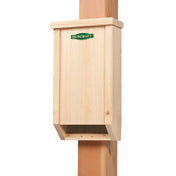Helpful Tips for Attracting Orioles to Your Yard
Orioles are one of the most colorful of our summer songbirds. It’s an absolute delight to hear and see these black and orange beauties flitting around the tree tops from early spring to late summer. If you would like to learn more about these fascinating migrants, take a few moments to enjoy this informative video from the Cornell Lab of Ornithology.
Make sure you have the feeders out before the birds arrive in spring. If you wait until you are seeing the orioles it may be too late! Have you noticed that most oriole feeders are orange? That’s because we find that orioles are greatly attracted to this vibrant color. You can increase the attraction to your feeders by festooning them with orange ribbons or strips of orange cloth.
Orioles like to forage for caterpillars and other bugs, but they are also drawn to feeders stocked with their favorite foods like nectar, jelly, suet and fruit such as oranges, apples, grapes, berries, pears and bananas. Many feeders are made to serve up multiple foods at once, such as combination nectar/fruit, jelly/fruit or jelly/fruit/nectar feeders. Orioles can be shy, so start by placing the feeders a distance from your home or high traffic areas and then move them closer so you can more easily enjoy their activity.
There are a few inexpensive add-ons to oriole feeders that help keep them safer. Weather guards shade the nectar from hot sun that can quicken spoilage and also prevent rain from getting in and diluting the nectar. You can imagine how attracted ants would be to the sweet stuff we put out, so be sure to add an ant moat and you’ll never have the problem of your feeders getting clogged with pesky ants. If your nectar feeder doesn’t come with bee guards, diluting the nectar a bit will discourage bees and wasps from dining on your oriole nectar.
Let’s get into specifics. Both bees and hummingbirds are attracted to nectar with a 4:1 ratio of water to sugar. So using a 5:1 or even a 6:1 ratio won’t attract honeybees and your orioles and hummingbirds will be happy with this new nectar. No matter what kind of feeders you buy or make, be sure to keep them clean! An inexpensive set of nectar brushes can make keeping your feeders clean much easier.
Another way to encourage orioles to stay is to provide them with nesting materials. Orioles build intricately woven pendulous nests from an array of grasses and other soft plant and animal fibers. You can fill a suet feeder or small basket with pet hair, natural fiber yarns (cut to lengths of less than 6” for safety), or you can try one of our new bison hair nesting products.
Birds tend to prefer natural products over man-made, and bison hair is warm, soft, and water repellent. You can also collect milkweed and cattail fluff during the summer and save it to put out at nesting time. We are lucky enough to have a pair of nesting orioles that return to our farm every year. Their beautiful song and vibrant colors bring added joy to our summer days.
I hope you’ll try a few of our tips–it can increase your chances of attracting the orioles to your yard or better yet, help you to encourage a pair to stick around and raise their family where you and your family can enjoy them. Make every day a happy bird day!








